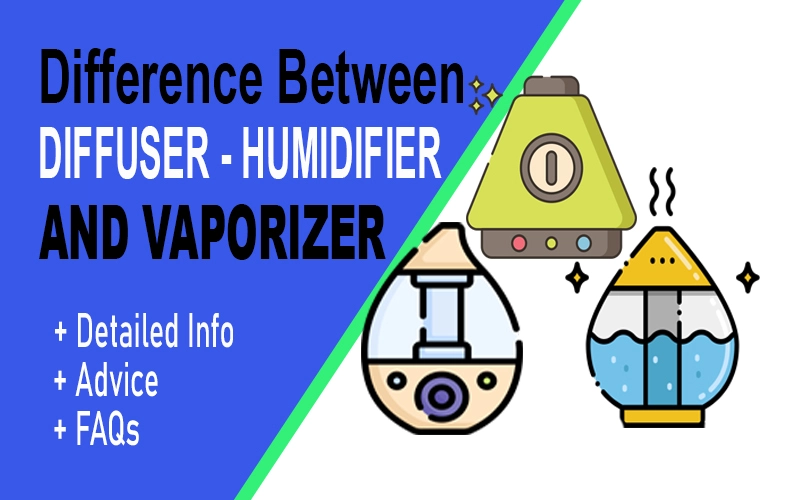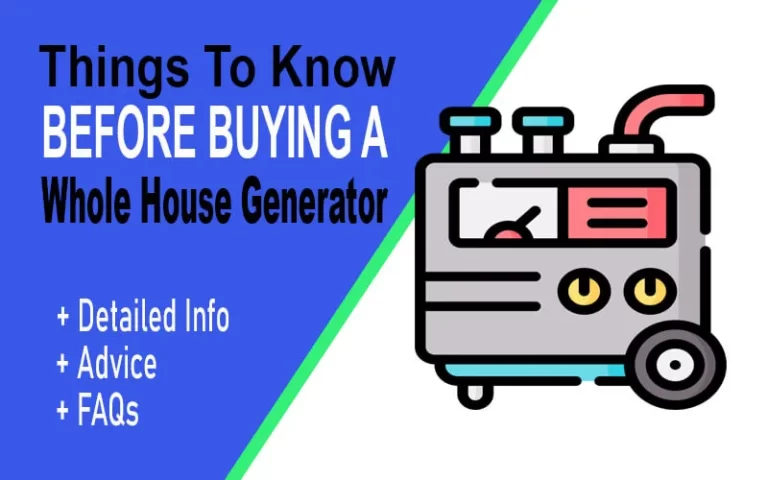Diffuser vs Humidifier vs Vaporizer: [+Differences] 2023
When creating a comfortable and healthy environment in your home, it is important to understand the difference between a diffuser vs humidifier vs vaporizer. All three devices serve different purposes and offer different benefits.
There are a lot of different options out there when it comes to humidifiers, diffusers, and vaporizers. So, how do you know which one is right for you? This article will help you understand the difference between the three so that you can choose the best option for your needs.
Diffuser vs Humidifier vs Vaporizer: Differences
What is a Diffuser?
A diffuser is a device that is used to reduce the velocity and increase the static pressure of a fluid passing through a system. This is done by creating a smaller area for the fluid to pass through, which decreases the fluid’s velocity. The static pressure is increased because the diffuser creates resistance to the flow of the fluid, which causes the fluid to push against the walls of the diffuser.
By doing so, the diffuser helps improve the system’s overall efficiency. In most cases, diffusers are used in conjunction with pumps or other devices that are used to move fluids. Diffusers are often used in HVAC systems to help distribute air evenly throughout a space. They can also be used in plumbing and other types of piping systems to control the flow of fluids.
What is a Humidifier?
A humidifier is a device that helps to maintain a comfortable level of humidity in the air. Many different types of humidifiers are available on the market, from small, portable units to larger, whole-house models. The performance of humidifier depends upon the placement of humidifier in the room or home.
Humidifiers can be very beneficial, especially during the winter when indoor air becomes very dry. Dry air can cause several problems, such as static electricity, cracked skin, and respiratory issues. A humidifier can help to alleviate these problems by adding moisture back into the air.
There are a few things to keep in mind when using a humidifier.
- First, be sure to clean your humidifier regularly to prevent the growth of allergens, mold and mildew.
- Second, use distilled water in your humidifier to avoid adding minerals and other impurities into the air.
- Lastly, monitor the humidity level in your home and adjust the humidifier accordingly to avoid making the air too moist, which can lead to condensation and other issues.
What is a Vaporizer?
Vaporizers, also known as “vapes,” are devices used to vaporize substances for inhalation. Vaping can be done with a variety of different liquids, including e-liquids, oils, and dry herbs. E-liquids are the most common type of liquid used in vaporizers, and they typically contain nicotine, flavors, and other chemicals. Oils and dry herbs can also be used in vaporizers, but these materials are less common than e-liquids.
Vaporizers work by heating a liquid or other material to create a vapor that can be inhaled. The heat source in a vaporizer can be either an electric coil or a ceramic element. When the material is heated, it turns into a vapor that contains the active ingredients of the vaporized substance. Vaping don’t use distilled water in any case.
For example, when nicotine-containing e-liquid is heated in a vaporizer, it produces nicotine vapor. Vaping has become increasingly popular as an alternative to smoking cigarettes. Unlike smoking, vaping does not produce tar or other harmful chemicals. Additionally, many people find vaping more enjoyable than smoking because of the variety of flavors available in e-liquids.
Cost of the Devices [Diffuser | Humidifier | Purifiers] :
Diffuser
A diffuser is a device that helps to spread out and distribute essential oils throughout a room. Dispersing the oils into the air allows for the benefits of the oils to be enjoyed by everyone in the room. Diffusers come in various shapes and sizes, and the cost of a diffuser is just over 15 cents per month.
This low price means purchasing a quality diffuser without breaking the bank. Additionally, this affordable price point makes diffusing essential oils a more accessible option for everyone. This is a very affordable way to improve indoor air quality and help you breathe more easily. Diffusers are a great way to improve the air quality in your home, office, or other indoor space.
Humidifier
Humidifiers come in a variety of shapes, sizes, and price tags. The cost of a humidifier depends on the specific model and features you are looking for. Generally speaking, humidifiers can cost anywhere between $150 and $1,100.
Some factors that will affect your humidifier’s cost include the unit’s size, the type of humidifier, and the features it offers. For example, a larger humidifier will typically cost more than a smaller one. Similarly, a humidifier with more features, such as a built-in humidistat or automatic shut-off, will also cost more than a basic model.
The cost of a humidifier can vary depending on your purchase type. The two most common types of humidifiers are whole-house humidifiers and portable humidifiers.
Whole-house humidifiers are typically more expensive than portable humidifiers, but they offer many benefits including improved indoor air quality and increased comfort levels. Portable humidifiers are less expensive than whole-house units, but they require regular maintenance and may not be as effective at improving indoor air quality.
Vaporizers
Vaporizers come in many shapes and sizes, and their price range varies widely, from around $300 to $5,000. The most expensive vaporizers are typically made with higher-quality materials and have more features than the cheaper options. However, it is important to note that the price of a vaporizer is not always indicative of its quality or performance.
Conclusion
There are many ways to improve indoor air quality, and each has its own set of benefits. If you’re looking for a way to improve your respiratory health, a diffuser, humidifier, or vaporizer might be a good option for you. Each has its own pros and cons, so be sure to research before making a purchase. And remember, the best way to improve your indoor air quality is to use a combination of these methods.
These devices come into consideration mainly when you are concerned about low humidity in your house, and each of these devices fixes that problem with its own pros and cons. Some of their features may suit your preferences for your living environment, but that is the simplest factor to consider when making the choice.



![How to Clean a Vicks Humidifier? [Daily & Weekly Plan] 2023](https://prohouseideas.com/wp-content/uploads/2023/01/how-to-clean-a-vicks-humidifier-768x480.webp)
![9 Sure Fire Benefits Of A Backup Generators [Savvy|Smart] 2023](https://prohouseideas.com/wp-content/uploads/2022/11/benefits-of-a-backup-generator-768x480.webp)
![Things You Need to Know about Types Of Dehumidifiers [2023]](https://prohouseideas.com/wp-content/uploads/2023/01/types-of-dehumidifiers-768x480.webp)
![Where To Place A Dehumidifier? [Info + Advice + FAQs] 2023](https://prohouseideas.com/wp-content/uploads/2022/07/where-to-place-a-dehumidifier-768x480.webp)
![Solved – How to Clean a Dehumidifier? [+Step by Step] 2023](https://prohouseideas.com/wp-content/uploads/2023/01/how-to-clean-a-dehumidifier-768x480.webp)